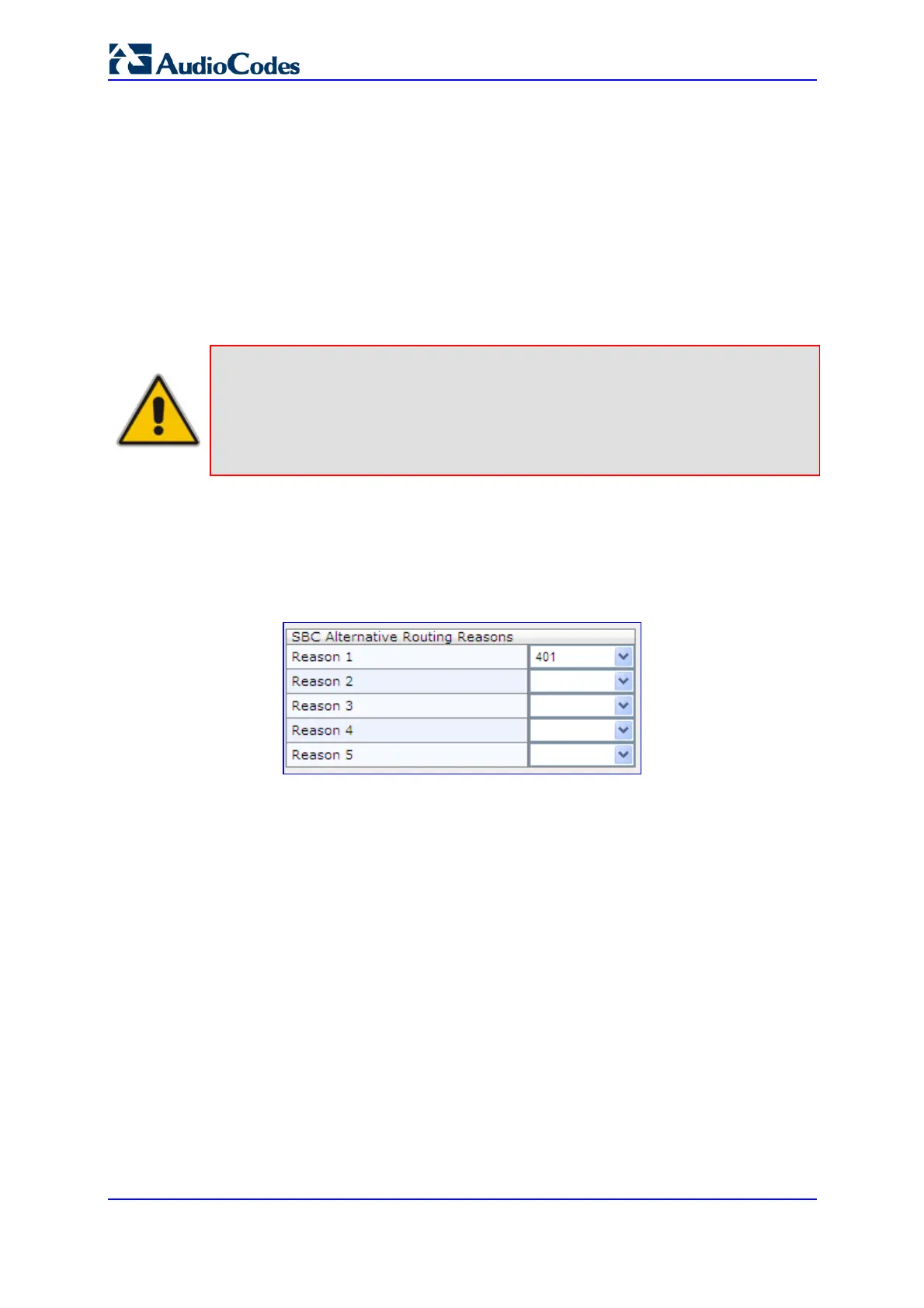SIP User's Manual 206 Document #: LTRT-12804
Mediant 800 MSBG
3.3.2.12.4.3 Configuring Alternative Routing Reasons
The 'SBC Alternative Routing Reasons' page allows you to define up to five different call
release (termination) reasons for call releases. If a call is released as a result of one of
these reasons provided in SIP 4xx, 5xx, and 6xx response codes, the device tries to find an
alternative route for the call. This call release reason type can be configured, for example,
when there is no response to an INVITE message (after INVITE re-transmissions), where
the device issues an internal 408 'No Response' implicit release reason.
Alternative routes are configured in the IP2IP Routing table (see ''Configuring SBC IP-to-IP
Routing Table'' on page 201).
Notes:
• Alternative routing occurs even if this table is not configured, upon
scenarios where no response, ICMP, or a SIP 408 response is received.
• You can also configure alternative routing reasons using the ini file table
parameter SBCAlternativeRoutingReasons.
¾ To configure SIP reason codes for alternative IP routing:
1. Open the 'SBC Alternative Routing Reasons' page (Configuration tab > VoIP menu >
SBC submenu > Routing SBC submenu > Alternative Routing Reasons).
Figure 3-108: Alternative Routing Reasons Page
2. Configure different call failure reasons that invoke alternative routing.
3. Click the Submit button to save your changes.
4. To save the changes to flash memory, see ''Saving Configuration'' on page 336.
3.3.2.12.5 Manipulations SBC
The Manipulations SBC submenu includes the following page items:
Message (see ''Configuring Message Manipulations'' on page 206)
IP to IP Inbound (see ''
Configuring IP-to-IP Inbound Manipulations'' on page 210)
IP to IP Outbound (se
e ''Configuring IP-to-IP Outbound Manipulations'' on page 212)
3.3.2.12.5.1 Configuring Message Manipulations
The 'Message Manipulations' page allows you to define up to 200 SIP message
manipulation rules. This manipulation includes insertion, removal, and/or modification of
SIP headers. Multiple manipulation rules can be configured for the same SIP message.

